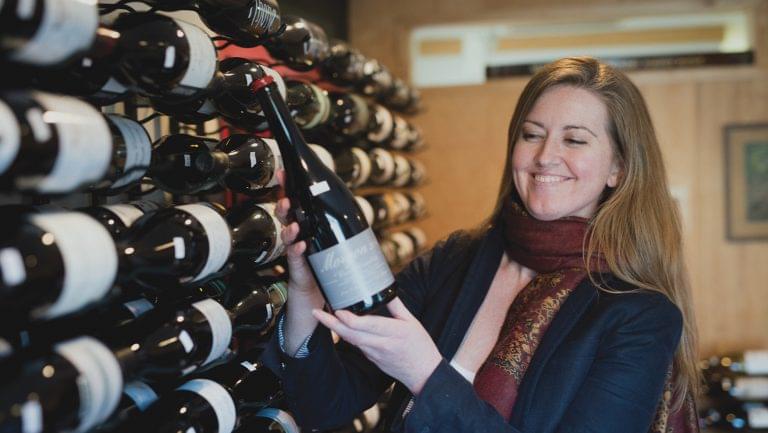Nobody opens a wine shop because they love to track inventory. But any successful retailer knows that routinely taking complete stock of your shop’s largest asset—that’s right, every single bottle—is essential to long-term success. Closely monitoring inventory is key to identifying best- and worst-selling items, reordering efficiently, and spotting possible theft.
Whether your New Year’s resolution was to implement a more formal, regular inventory process, or simply to fine-tune what you’re already doing, the winter lull is an ideal time to reassess the procedures you use in your operation.
Know Your Starting Point
With so many potential reasons for variances between what’s on paper and what’s actually in the shop, you want to make sure that your starting point is correct. As Jeffrey Wolfe, the owner of Wolfe’s Wine Shoppe in Coral Gables, Florida, notes, “Getting the right information into the computer system is paramount, so receivables need to be dead on.” One mis-entered delivery can turn into multiple miscounts on the next physical inventory. Make certain your process for receiving and recording new product is solid.

Don’t miss the latest drinks industry news and insights. Sign up for our award-winning newsletters and get insider intel, resources, and trends delivered to your inbox every week.
Also take some time prior to diving into a physical inventory to make sure your tracking spreadsheets reflect the layout of your shop. For example, if a given bottle could potentially be located in multiple places (e.g. the stockroom, a shelf, a display table, the cooler), then add those columns to make it easier to track where you have counted.
All of these details will enable an inventory process that’s less painful and more impactful. Not only will you spend less time counting, but you’ll avoid double checking work you have already completed. With a more efficient process, you’ll save hours and also be more inclined to conduct inventory frequently, says Andrea Hillsey, owner of Square Wine Co. in Madison, Wisconsin, who takes a full physical inventory every month: “If you take care of the small details, the large ones will take care of themselves.”

How and When to Count Bottles
Taking a full physical inventory sounds simple: Compare the bottles you have in the shop with the bottles you have on paper and look for any discrepancies. It’s just counting, right?
Definitely not right. Accurately inventorying multiple items from the same producer or multiple vintages and sizes of the same item is anything but simple. Generally, this is easiest to do when the shop is closed; set aside a chunk of time dedicated solely to stock checking.
Estimating the amount of time needed follows the same rules as planning for a renovation, suggests Mitch Ancona, owner of Ancona’s Wines in Ridgefield, Connecticut: “Estimate the time you need, then double it. And that still won’t be enough.” To streamline the process, he hires a third-party inventory service to lend helping hands. Ancona finds this saves time and insures a smoother process, but that fine-tuning is still always necessary after the third-party team departs.
Stevie Stacionis, owner of Bay Grape in Oakland, California, takes an all-hands-on-deck approach to physical inventory, which is taken quarterly. Stock levels from the point of sale (POS) system are exported into a spreadsheet. The staff breaks up into teams of two and each pair is given a section of the shop to work on. “It’s a regimented process,” she explains. “One person on the team calls out the wine, the second repeats it. The first person gives the count and the second person repeats it and inputs it into the spreadsheet.”
After everything is counted, Stacionis reviews the variances, assigns recounts (multiple SKUs for a single producer are often miscounted), and announces the final dollar variance as a way to drive home the purpose and impact of what the team has just accomplished. “I’m teaching them how to run their own shops at some point, so this is a real learning experience,” notes Stacionis. “I’ll explain why they are here and why this is important.” Of course, ordering in some food and opening a great bottle of wine makes the effort feel more team-building and less chore-like.
Smaller shops may find it possible to manage a full physical inventory while they are open. During her shop’s slowest day of the week, Erin Scala, who owns In Vino Veritas in Keswick, Virginia, focuses on individual sections, counting out small groups of items, adjusting the counts in the POS system immediately, and noting any losses or overages in emails to her team. By the end of the day, she’s able to run an inventory-on-hand report for the entire shop.
Break it Down: Cycle Counting
If the phrase “physical inventory” grips you with fear of all-night counting sessions, cranky staff, and cold pizza, consider cycle counting. Rather than tackle the entire store in one day, break the shop into sections to cycle through, counting each section every month or quarter, depending on your inventory period.
At Tribeca Wine Merchants in New York City, Lauren McPhate conducts a count of wines before the start of an in-store tasting or prior to sending out an email offer. Ancona will have a stock check done whenever a new order is received. At Irving Bottle in Brooklyn, Erin Bender runs a monthly report to identify items with a stock level of three or fewer and then checks that they are still on hand. These periodic checks help keep stock levels closely in line with what is on paper and reduce the need for a full-store inventory check.

Getting Behind Variances
You’ve counted and re-counted. So now what? You need to update your stock levels, which depending on your inventory management software, may be as simple as pressing a button or uploading a file. Or it may involve a more manual effort. If so, Sarah O’Kelley at Edmund’s Oast restaurant in Charleston recommends working with “one lucky staff member” to take that last step of entering all the data into the computer while the numbers are still fresh.
The final step is analyzing those variances, understanding the reasons behind them, and reducing them moving forward. Theft is always a possibility; taking regular inventory will help you spot any patterns and take action.
Other reasons for the “ones that got away” often include bottles opened for in-store tastings or staff trainings, breakage, comped bottles to customers, or similar bottles that are rung up incorrectly. Minimize these variances by developing and training staff on procedures for tracking these specific situations. At my own shop, Copake Wine Works in Copake, New York, we set up “trainings” or “breakage” as customers in our POS system; we log bottles that fall into these categories as zero-dollar sales in real time and attach a note if needed. Lower-tech tools for tracking these variances can be as simple as a paper spreadsheet where staff can keep a running list to be entered weekly or monthly.
Counting bottles and wrangling spreadsheets doesn’t have the same romance value as pulling corks. But having a streamlined and accurate process in place leaves more time and energy to focus on the wines and spirits you are selling—the reason you are in this business, after all.

Dispatch
Sign up for our award-winning newsletter
Don’t miss the latest drinks industry news and insights—delivered to your inbox every week.
Christy Frank is a partner at Copake Wine Works, a shop in the Hudson Valley of New York. She is an advanced sommelier with the Court of Master Sommeliers and holds the WSET Diploma in Wines.







